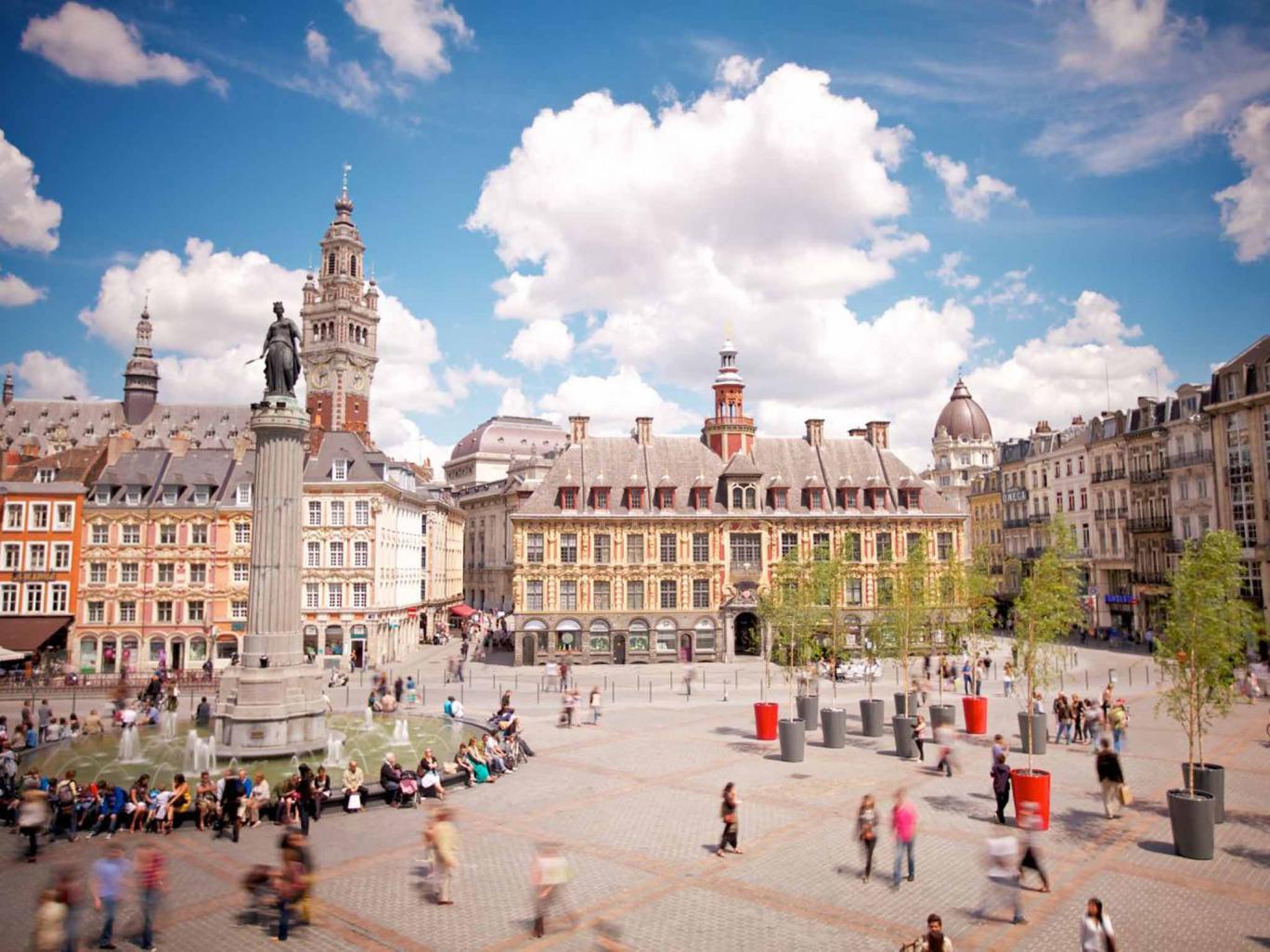The Independent's journalism is supported by our readers. When you purchase through links on our site, we may earn commission.
Euro 2016 host cities: guide to Lille
As Uefa Euro 2016 kicks off, The Independent has compiled concise guides to each of the host cities

Get your bearings
From Gare Lille-Flandres, Rue Faidherbe aims west to the city’s two central squares: the Place du Théâtre, dominated by the opera house, and Place General de Gaulle, also known as the Grand Place, with “the goddess” at the centre. Note the fine newspaper building, La Voix du Nord.
Between the two squares stands the last great Flemish creation in Lille, the 1653 stock exchange, La Vieille Bourse. During the day you can wander through the courtyard. Vieux Lille, the old Flemish town created in the 16th and 17th centuries, spreads north and west from here.
The atmospheric tourist office is located in a surviving fragment of a late Gothic palace, the Palais Rihour, on Place Rihour (lilletourism.com). It is rather hidden behind the city’s huge war memorial. Head up the stone steps for a glimpse of what remains of the former private chapel.
Touch down
Reach Lille by Eurostar (eurostar.com) from London St Pancras, Ebbsfleet and Ashford to Lille-Europe station.
From elsewhere, you could fly to Paris and take the one-hour TGV train journey to the terminus of Lille-Flandres – a five-minute walk from the Eurostar station. The façade of this fine terminus was the original Gare du Nord in Paris, and was moved north brick-by-brick.
Take a hike
From the 1932 Art Deco Belfry you’ll see the 17th-century Porte de Paris, built as the gate to the capital to honour Louis XIV’s capture of Lille from the Flemish. This triumphal arch was once part of the city walls, but now stands isolated in the middle of a roundabout.
The Rue de Paris runs north from here. For the first kilometre it won’t thrill, but once you enter the Place de Théâtre the impressive range of Lille’s heritage is revealed. Here, look out above La Cloche for a cartoon-like figure beneath a bell.
The square funnels into Rue Pelletier, and so should you. Follow Rue Masurel around and you come face to face with the strange façade of the Cathedral – best visited for Sunday Mass. Turn left then right along a cobbled street leading to the pretty Place aux Oignons.
Lunch on the run
The estaminet is a Flemish creation: a friendly local bar with farmhouse furniture and a short but appealing menu. On the Place aux Oignons, Au Vieux de la Vielle (estaminetlille.fr) is a cosy and cheery place packed on weekdays by locals and at weekends by tourists. The salads are good, and service is speedy.
Window shopping
Many old weavers’ cottages in Vieux Lille have been converted into independent shops with big windows – resulting from the original need to move looms in and out. As the former textile capital of France, Lille still has a strong design tradition, with Rue Lepelletier and Rue Basse offering plenty of choice.
An aperitif
Drink the potent Flemish brews of Affligem and Brigand at Les Trois Brasseurs, a big and bustling bar at 18-22 place de la Gare (les3brasseurs.com). The three brewers were from Alsace, Belgium and northern France, representing the holy trinity of good beer in this part of the Continent. You can also eat well here, if you choose. A Lille staple, the bar now has outposts in Canada and Brazil.
Dine with the locals
Lille’s “Restaurant Row” is Rue du Gand – the old road to Ghent, culminating at the Flemish fortification of Porte de Gand. The optimum choice, best booked in advance, is a sister restaurant to the lunch option: Chez la Vielle at No 60 (00 33 3 28 36 40 06; estaminetlille.fr/chezlavieille). A reliable alternative is Les Ptiots at No 35 (00 33 3 20 74 22 68).
At either you can choose between two hearty Flemish specialities: carbonnades flamandes (beef slow-cooked in beer) or Welsh – a tasty, filling local take on Welsh rarebit. The bill for two, with a pichet of wine, is around €30.
Cultural afternoon
Modernist mansion Villa Cavrois (villa-cavrois.fr) opened its doors to the public last summer, distilling the essence of modernism into a single, sleek structure, set among elegant gardens. In the 1980s it was abandoned and left to decay, despite the calls of a young lawyer, Paul-Hervé Parsy, for it to be rescued.
Three decades on, the property is a national monument and M. Parsy is the administrator. The architect Robert Mallet-Stevens has created harmonious spaces full of light and intriguing corners such as the smoking room. The grounds contain pools that reflect the clean geometry of the villa (closed Tuesdays, admission €7.50).
Icing on the cake
Most travellers using Lille-Europe station only see the side leading to the centre, and miss an amazing piece of public art in the shape of a mural that wraps around the interior walls north of the tracks. It takes you on a tour of the world, with images from Tower Bridge to the Sydney Opera House.
Additional research by Francesca Street
Subscribe to Independent Premium to bookmark this article
Want to bookmark your favourite articles and stories to read or reference later? Start your Independent Premium subscription today.

Join our commenting forum
Join thought-provoking conversations, follow other Independent readers and see their replies